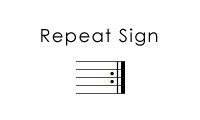 |
 |
SkyLeap Home > SkyLeap Publications > Beginning Clarinet Songbook Home > Volume 1 Welcome to the Beginning Clarinet Songbook Lesson 15: Form Follow the links below for more information on each song, as well as pictures and helpful links. Song #1: Reflections of a Beautiful Sky Song #2: Two Chickadees Go Out to Dinner Song #4: The Happy Dance of Clarobotoo and Flopsy the Whimsical Clown Song #5: The Warmth of the Sun on Sailing Day The elements of music in Lesson 15: Sound: Pitches used in this lesson: Low G through B flat Congratulations!!! You have made it to the end of Volume 1 of the Beginning Clarinet Songbook, by Kyle Coughlin. If you have practiced and studied all of these lessons, you have learned a lot about music and how to play the clarinet. Take a look at the list of elements of music in Lesson 15 and compare it with the elements of music in Lesson 1. There is quite a difference between those two lists. This lesson will review all of the material you have learned in the first fourteen lessons. It will also teach you some things about musical form. Up to this point, all of the songs you have learned have involved playing straight through from the beginning to the end. However, we sometimes have to repeat sections or jump back to earlier sections in a piece. With all of these markings you should maintain a steady tempo without pausing at the repeated sections. This lesson will teach you several different ways in which the form of a piece can be changed. At the end of song number 1 you will see a repeat sign, which looks like this:
This repeat sign indicates that you should go back to the beginning and play the entire piece again. You will repeat the music one time, and therefore play the music a total of two times. Song number 2 begins with a starting repeat sign, which looks like this:
It clarifies that you should repeat back to measure 1 after playing measure 4. There is also a starting repeat sign at the beginning of measure 9. In that case, after you have played measure 12, you should repeat back to measure 9 and play that section one more time. Song number 3 features first and second endings. The two endings are indicated by the numbers that lie underneath the brackets. In this piece you should play through measure 8 and repeat back the beginning. On the second time through the piece, when you get to the end of measure 6, you should jump straight to the beginning of the second ending. Don’t play the music of the first ending again.
Song number 4 has first and second endings, too. You will also notice two different dynamic markings at the beginning of the piece. In this situation you should play the music mezzo forte the first time through, and forte the second time through. Song number 5 does not have any repeat signs, but it does have some new markings. At the end of measure 8 is the word “fine” (pronounced fee-nay). At the end of measure 16 it is marked “D. C. al fine” which stands for Da Capo al fine. It means that you go back to the beginning of the piece and end where it says “fine.” Song number 6 is similar to song number 5, but with a few differences. At the end of the piece it is marked “D. S. al fine” which stands for Dal Segno al fine. It means to go back to the sign in measure 9, and play through to where it is marked fine. The “sign” looks like this:
There is a great deal of new information in this lesson. Remember to come back to it and use it as a reference for any questions about form and repeats. |
For more educational tools for the clarinet, please visit www.ClarinetSpace.com and www.MetronomeBot.com |
Thank you. |
Home | Publications | Recordings | Educational Tools | Store | Contact © 2006-2009 by Kyle Coughlin and SkyLeap Music, All Rights Reserved |





